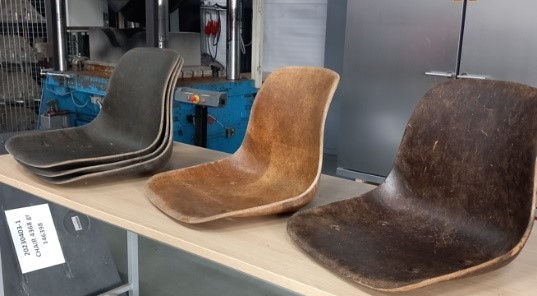Positive Impact - Learnings from Reusing ‘Bugiful’ Furniture
- info900853
- Aug 9, 2024
- 2 min read
By Eve Waldron, as featured in Mix Interiors

Recently we embarked on an challenging project to retrofit the interiors of a 1930s former telephone exchange to create a new home for the Cambridge Institute for Sustainability Leadership (CISL), the Entopia Building. Our role on the project included all aspects of the interior design; the project was conducted in line with CISL’s values and the principals of the circular economy. We constantly referred back to these values while sourcing furniture for the project. As a result, over 60% of the furniture was second-hand.
The UK furniture manufacturing industry is of considerable importance to the UK economy. It generates in excess of £8.3 billion of factory gate sales and employs nearly one hundred thousand people. Like many other manufacturing industries, furniture production generates significant carbon emissions, emitting over 900 tonnes of carbon per year in the UK alone, therefore there is a great scope for the industry to assess and reduce its carbon impact.
Currently, the companies within the industry that are engaging in carbon footprinting do so independently, utilising differing boundaries and methodologies to assess their businesses and products. The lack of consistent methodology means that the data produced cannot always be comparable. Therefore, reusing and preventing furniture from going to landfills must be the first principle of sustainability.
Working with second hand furniture is time consuming. The process requires an iterative approach - as new furniture becomes available, and other pieces miss our grasp we have to continually revise the specifications. Space planning must be fluid, because furniture needs to be tested on plan and might not be available in the size that’s required. There are other challenges associated with fire ratings, re-upholstery, castors, communications [and so on]. Specifying new furniture is a piece of cake by comparison, however the outcome is undoubtedly more unique!
We have been interested in thinking about fads, trends, fashion, style and so forth during this process. It’s an interesting viewpoint that supports the idea that what was once fashionable goes out of fashion, then comes back in again in a ‘retro’ style and so on. One can say that design trends are therefore circular - which must be good. To be more sustainable, and reuse furniture - we do need to be more open minded about design, what looks ‘good’, ‘cool’, and ‘trendy’.
Everyone has differing views on this, and the selection process can be involved. I have seen fashions come and go – and have played my own part in trying them out and experimenting. I can find beauty in most styles, and some that others may find ugly – like some of the 1970’s brown chairs we found in the CISL storeroom. (I call them fugly – fun and ugly – or is it beautiful and ugly - bugiful?!) We can use them in an ironic way as it’s the final composition that makes the space interesting; by juxtaposing them with other pieces we can show that they were intentionally chosen and should not be seen as second best.
Circularity can throw up some unexpected surprises.

--------------------
Eve also participated in a live Rountable with Mix earlier in the year, which was an interesting discussion titled 'Is fast design at odds with sustainability?'. Read the article and watch the video here.


